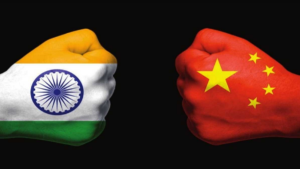The Line of Actual Control (LAC) between India and China is not demarcated through a formal agreement; either side can vary in its perception. Unfortunately, this has remained the truth despite the numerous confidence-building agreements signed since 1993 and two informal summits. Out of the 857-km-long border in Ladakh, only 368 km is the international border (IB) and the rest of the 489 km is the LAC. In 1865, W.H. Johnson, a civil servant, proposed the “Johnson Line” which put Aksai Chin in Kashmir. Although Chinese never accepted this line, it was well accepted as the border between India and China by the international community.
Traditionally, the Himalayas have been the ancient boundaries of the Indian subcontinent and hence should be our modern boundaries as well. But in 1956, China constructed a road through Aksai Chin, connecting Xinjiang and Tibet, which ran south of the Johnson Line in many places. Aksai Chin was easily accessible to the Chinese, but access from India, meant negotiating the difficult Karakoram mountains.
Why is this standoff important from a global perspective? The relationship between India and China is that of competitive rivalry. India wants to dominate the South-East Asian territory via economy; China on the other hand uses both military and economic powers to dominate areas. China is known as a hegemonic and overbearing nation in this area. The RCEP was a live example of this rivalry and India by not signing has undermined the power of her individual influence.
India’s approach vis-à-vis China has been more than erroneous over the years where maintaining peace at all costs was the only aim. India’s polity led by the Congress and supported by communists favoured and nurtured this approach. Whether it was the military acquisition of Tibet or human rights abuses in China, India always remained a silent spectator.
The Modi government, however, has a different approach. One month before the Doklam crisis, China gathered about 30 leaders from different countries for the Belt Road Initiative (BRI) project. The project was aimed at creating a new Chinese world order. The economic corridor between China and Pakistan was being discussed. India excused itself out of it stating sustainability concerns and that eventually led to the Doklam standoff.
Recently, China found itself amidst a geopolitical crisis with US President Donald Trump referring to coronavirus as the Chinese Virus! India on the other side post the abrogation of Article370 released the map of the Ladakh region with Aksai Chin and also sent representatives to the swearing in of the Taiwanese Prime Minister. Apart from this, India had openly declared its intention to attract manufacturing away from China, amid its growing trade tension with the US. The Galwan Valley midnight massacre was planned by the Chinese to paralyse the decision-making capability of the current government by creating adverse public opinion within India.
During the 1962 IndiaChina war, a Chinese daily carried the headline saying “The Indian Government Should Rein in on the Brink of the Precipice”. This beautifully sums up the relationship that it shares with India even today. The Indian government’s construction activities, including that of a bridge across Shyok river, and the 255 km Darbuk-ShyokDBO road which will provide a crucial connect between Leh and Daulat Beg Oldie (an advanced landing critical for air landings), and the fear of India converging into Aksai Chin plateau which houses the crucial Xinjiang-Tibet highway pass have irked the big brother syndrome in the Chinese.
The Chinese will be forced to de-escalate with the fear of being singled-out in the world order, also with the apprehension of escalating voices from Taiwan, Hong Kong and maybe Tibet. But in my personal opinion the communist regime never intended to escalate a war-like situation. What it intended to do was instil a fear in the mind of Indians and regress them from matters of real concern in today’s challenging times.
Yes, it is necessary to deescalate the situation at the borders but it’s equally important to play the game by understanding the enemy’s psyche. It is important for India to build infrastructure where it matters, to research new technologies, to facilitate conducive environment for the international companies and to sustain the face of a strong Aatmanirbhar Bharat.
As far as the India-China face-off is concerned, it is part of a well-thought-out strategy where the regime knows the ‘Chinese whisper’ will be picked up by the likes of Rahul Gandhi and a few media professionals. Thankfully, the Indian government seems to have understood the Chinese “game” and responded to the challenge appropriately.
The author is a politician, entrepreneur, tech enthusiast, blogger, columnist, TEDx speaker, SDG and government policy expert.













